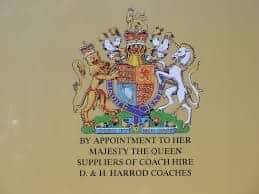What types of websites are there?
There are millions of websites about everything. If you’re thinking of making your own website, it might be useful to think about the different types of websites and how they are used.
This article compares and contrasts 5 different kinds of websites.
- Brochure, or Business Card, sites
- Booking sites
- E-commerce sites
- Aggregator sites
- Massive bespoke websites
First, Business card sites
These are sites that typically contain a few pages to introduce a business or an individual and act like a digital brochure. These sites are often used by tradesmen and freelancers. Their purpose is to generate leads and interest, but they won’t need an interface for online users or an online shop.

A Business card site starts with a homepage to introduce the business. Then it’s important to have a page showing evidence of work done in the past with photos and reviews from happy customers. There’s a page with contact details and perhaps a blog and links to social media.
Small companies who need an online presence often start with a business card site. Sometimes this type of site evolves into a booking site, or a small e-commerce site, as people realise the potential of an online booking system or an online store. (See examples 2 and 3 below)
Canape Wines in Glasgow is an example of a brochure website recently completed by Simon Peter Media
Large and well known companies also use business card sites. A massive, even global, company might use its website to explain their business, and introduce their staff and also their affiliates, (ie., ‘who we’re good enough to work with.’) They market their products and services through portfolios of work done and who uses their company, but they would not sell anything directly from their website. While these sites are larger and more expensive to build and maintain, they have a lot in common with the small inexpensive business card sites. They’re static (don’t change a lot), they don’t need contributions from members of the public, and they don’t use an e-store.

Second, Booking Sites
Next, booking sites are like business card sites, only they include a call to action from users online, i.e., a booking. These sites serve hospitality sector businesses like restaurants, cafes, tourist rentals and city attractions.
For example, if you were a restaurant owner constructing a website, you’d want links to your menus, pictures of your food and dining atmosphere, maps and directions to your location, links to reviews and recommendations. You might keep a food or recipe blog to boost your online content and personality, but the most important aspect would be your contact page. An excellent booking interface encourages potential customers to book a table.
City attractions, ie., museums, galleries, theatres, use much the same format with a booking page to sell tickets. Holiday lets use a similar site structure, often also including a calendar of available dates and peak/off peak pricing to facilitate booking.
These websites start like a business card website, but they require an interface to engage with the general public for booking. This interface can be very simple, from a simple ‘book now’ button connected to email, to extremely sophisticated with multiple layers of coordination and communication.
Third, E-commerce sites

E-commerce sites have a similar structure to booking sites, only instead of booking a ticket, or a holiday rental time, or a dinner booking, they have various items for sale.
So, they need multiple product pages, or at least itemised lists, which link to the user ‘basket’ and then payment options.
Small scale e-commerce sites
Let’s take the example of the restaurant in example 2. Suppose the restaurant owner wanted to expand their business to include food ordering and home delivery. The menus aren’t just pictures or pretty PDFs anymore. They must evolve into dynamic, itemised documents linked to an ordering backend with full stock control. Ideally, the customers need to see a professional organised ‘front end’ of the website where they order, provide personal details and place payment, and the restaurant employees need an efficient and organised ‘back end’ interface to process these orders.
Sri Spice is an example of a small-scale e-commerce site designed by Simon Peter Media
Another example might be a small shop in ‘real life’ who had a business card site in example 1, but was looking to expand their sales base online. They would need to add an e-store to their site. An e-store needs product pages, perhaps with pictures and reviews of the items. These pages link to a shopping basket for users and order summaries and stock control for employees. The shop would also need to include a page about their shipping policies and their returns policy.


Freelancers can also use small e-commerce sites. An excellent example of this is the website Simon Peter Media created for musician Phamie Gow. On the surface, Phamie’s site seems to be an elegant example of a business card site advertising her work as a harpist. However, she also sells CDs, vinyls and digital downloads of her recordings, so she needs an online shop as well.
Large scale e-commerce sites
Large e-commerce shops have all the characteristics of small online shops, but they sell hundreds, if not thousands, of different products and variations of products (size, shape, colour, etc.) They need powerful host servers to ensure their massive websites load quickly for users. If their website is slow, they will lose customers.
They also need to be able to customise information on the back-end interface depending on which employee is using it. Different user roles have associated permissions. For example, managers might have information about stock ordering and sales performance, while a packing person needs to access orders coming in to fill them.
Mr. Fixit Wholesale is an excellent example of a large scale e-commerce site
Fourth, Aggregator sites
The author’s husband suggested the name for this type of site and the author enjoys the term for its constructive energy! These sites accumulate and compare information, like bulldozers ripping up earth and bringing it all together in one place.
Examples of these sites are Trip adviser, Compare the Market, Expedia, Skyscanner, and Yelp. These are now enormous companies with ubiquitous reputations, but at their core, they started by just bringing together information from thousands of booking and e-commerce sites.
Lastly, Massive Bespoke Websites
Finally, large bespoke websites are like aggregator sites, bulldozing information together, but also relying on generated content from thousands, if not millions, of users – “User Generated Content.”
Examples are, you guessed it, Amazon, Facebook, Instagram, Twitter, Google, Pinterest, Ebay, Etsy, and Gumtree.
All of these sites rely on user generated content. The value isn’t in the platform, but in the content that hundreds of thousands of users upload every day. Incidentally, and not surprisingly, user generated content is one of the most successful business models. If a company can attract enough users, they facilitate a platform for people who sell, people who buy, people who give reviews, etc., etc., and take a small percentage of the site’s activity for using the platform.
These websites need massive resources to secure, deliver and maintain their platform for their thousands of users. They require high performance, ultra reliable and secure servers, and full-time engineers for the development and maintenance of their software. They also typically have an associated mobile app for phones, tables, TVs and wearables (e.g. smart watches) to deliver the same user-generated content in a more mobile-friendly way.
In conclusion....
People just use websites every day, often without thinking about it. Considering and designing site structure helps support the purpose of the site. These categories are not intended as an exhaustive taxonomy. This is just a springboard. Hopefully this page will help someone identify what components they need to build their own website.
So, whether you’re working on a small business card site, an e-commerce venture, or you’re creating the next Google –
Good luck!

